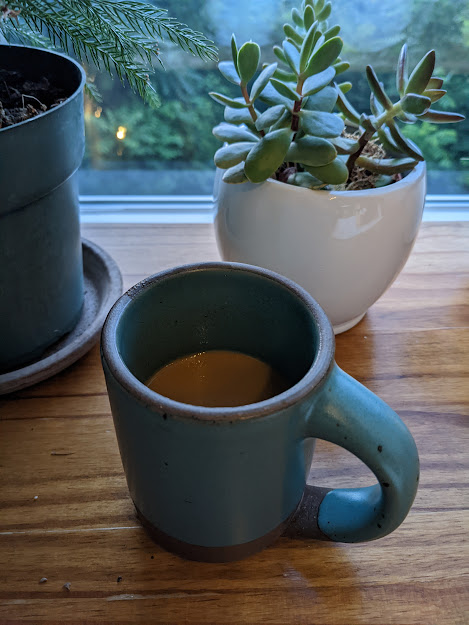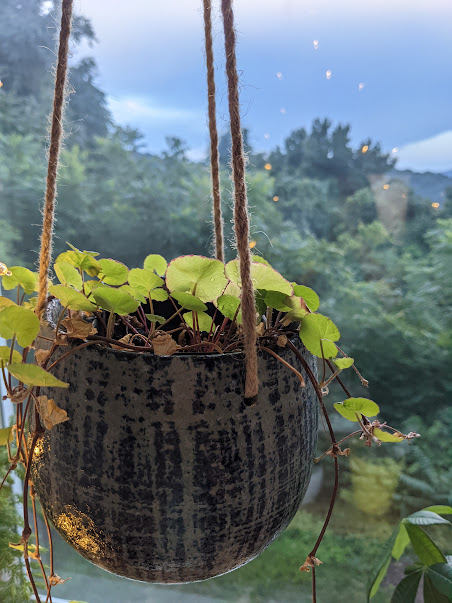As we head into the darker, cooler months of winter, many of us look forward to the sights, sounds, and activities of the holidays. Some of us may pine for quiet snow days and the opportunity to turn within and reflect. Whatever part of the globe you inhabit, an uptick in family gatherings and travel is a good reminder to focus a little more on your health. Let’s take a look at some herbs for health and cheer, especially during winter…Read the full post on the Herbal Academy blog HERE.
5 Autumn Spices for the Herbalist’s Kitchen
I adore autumn, and yet I find it a bittersweet time of year, being the harbinger of the cold, dark days of winter. Whether or not you welcome the transition from the heat of summer to the cool of autumn and winter, adjusting your foods, spices, and herbs to fit the season is one important way to attune yourself to nature and its rhythms. I find that immersing myself in the flavors, colors, and rituals of each season allows me to accept with greater grace the changes in light and temperature that autumn and winter bring. The fall harvest offers a wealth of delicious, comforting food choices, and the opportunity to enjoy seasonal foods with autumn spices.
Autumn Spices: What to Consider
It was difficult to pick just five autumn spices to feature in this article. First of all, you don’t need to restrict yourself to just five spices for fall! My intent here is to offer a flavor profile to consider and to get you thinking about the energetics of autumn. What factors are there to consider when choosing spices for this season?
According to Ayurveda, fall is ruled by vata dosha. This is the time of year in which vata qualities—lightness, dryness, mobility, subtlety—become more pronounced. Especially for those with a vata constitution or vata imbalance, it is especially important to be mindful of vata qualities becoming excessive during this time of year. So what is the solution? Focus on warming, moist, nourishing, grounding foods, herbs, and spices. Cooking with autumn spices is a wonderful, tasty, and aromatic way to incorporate vata-pacification into your everyday routines. Let’s take a look at five autumn spices to incorporate into your herbal kitchen this season.
Read the full article on the Herbal Academy blog HERE.

Tincture, Decoction, Tea, or Ghee – An Ayurvedic Perspective on Herbal Preparations
We all have our preferred methods of enjoying herbs. Some love hot herbal tea, some like a cool infusion, and others reach for the convenience and potency of tinctures. Or, some may crave the unctuous, nourishing qualities of herb-infused oils and ghee. There are many reasons why one may choose one type of herbal preparation over another. In Ayurveda, the optimal herbal preparation is more than a matter of simple preference or convenience. There are distinctive reasons for choosing a tincture, decoction, infusion, herbal juice, or ghee. In this post, you will become familiar with the ayurvedic perspective on different types of herbal preparations, and some reasons why you may want to choose one preparation over another.
The ideal way to take a particular herb depends somewhat on the herb itself. Some herbs make wonderful tea and others are so bitter or astringent that the most reliable way to get them down is in capsule or tablet form. Also, some herbs are better taken fresh whereas others require decoction or tincturing to extract their benefits. That said, the energetics of the individual receiving the herbs also help determine which herbal preparation is best. Let’s look at some of the major herbal preparations in Ayurveda and the energetics of each.
Read the full post on the Herbal Academy blog HERE.
Cultivating Clarity with Foods and Herbs
Most of us agree that a clear, peaceful mind is desirable. There are few of us who wish for an internal state that is characterized by turbulence and discord. Of course, cultivating and maintaining inner clarity is often easier said than done. However, we can take steps to create conditions for greater clarity and harmony within our own mental and emotional landscape. This post will explore foods and herbs for supporting a clear, or sattvic, mind.
What is Sattva?
First of all, what is sattva and why does it matter? According to yoga and ayurvedic philosophy, all of nature is characterized by three gunas, or qualities: sattva, rajas, and tamas.
Sattva is the quality of illumination, purity, and lightness. It leads to clarity, harmony, and serenity. Rajas is the quality of mobility and activity. Someone who is predominantly rajasic will be restless, tense, agitated, and even aggressive. Tamas is the quality of darkness and inertia. Without tamas, we would not fall asleep at night. However, a predominance of tamas in a person may be reflected as delusion, sloth, dullness, and even deceit and cruelty (Iyengar, 1979).
…So, which herbs and foods support a sattvic mind? Read the full post on the Herbal Academy blog HERE.
